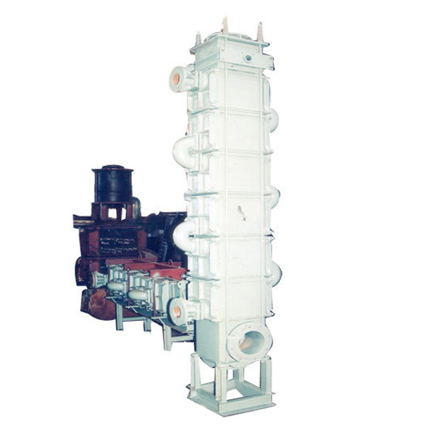Graphite Heat Exchanger
Heat exchanger series is the most advanced design of
polyblock heat exchangers. These are constructed from identically formed
impervious graphite blocks with two types of passages viz short radial
passages of 100 to 150mm length converging into a central cavity and short
length axial passages with remixing of all the axial tube fluids in a mixing
cum redistribution channel every 150 to 300 mm travel of the axial fluid.
This particular feature of hydraulic design gives abundant turbulence even
at low flow rates and enhances the 'u' and reduces the fouling & scaling
drastically. The effect of high 'u' and lower fouling coefficient 's' is
that for the same heat duty the hta value is lower. Due to their main
features of robustness, high mechanical strength and exceptionally long
working life, these heat exchangers are widely used in pharmaceutical
industries, pesticide and fumigant sectors, dye stuffs, other chemical
process industries, petrochemicals, phosphate fertilisers and pickling lines
of steel rolling mills etc.



